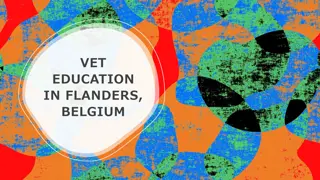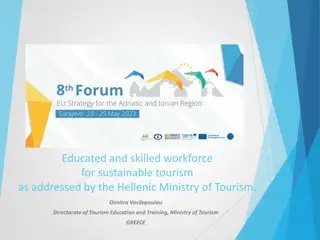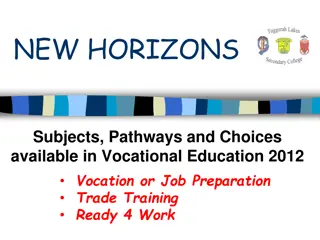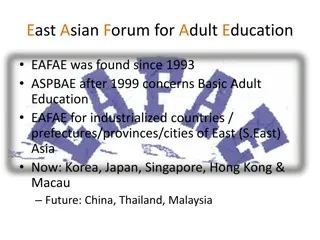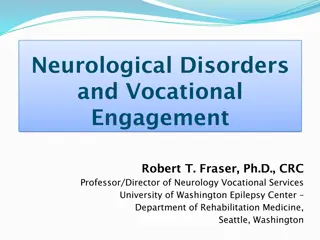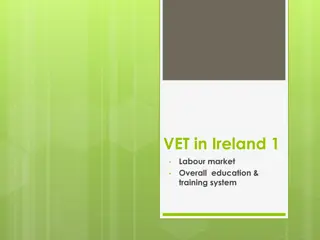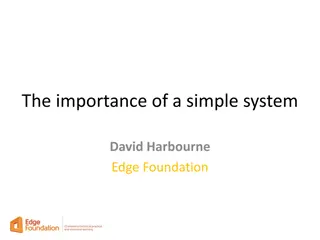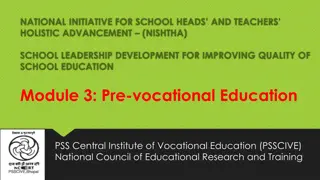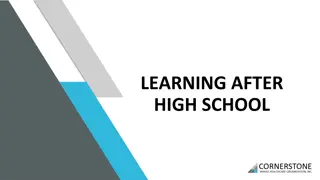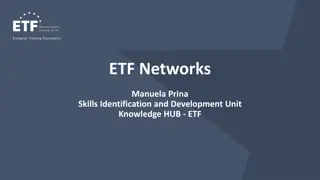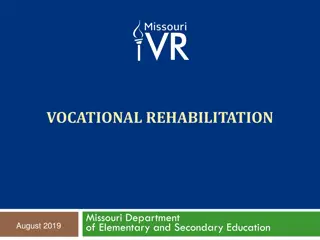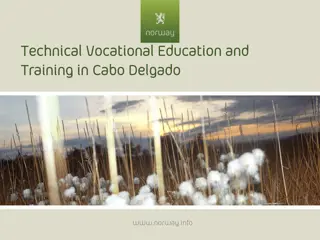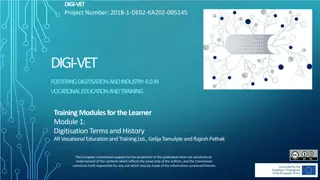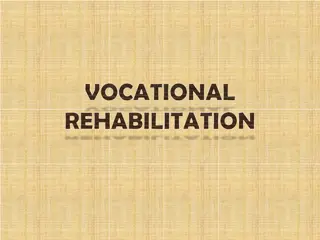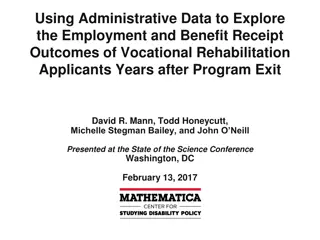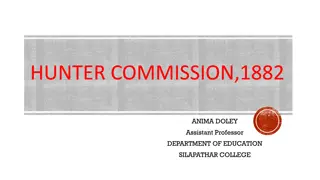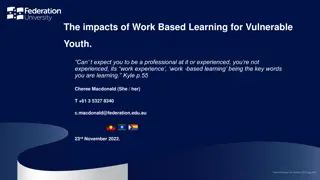Challenges and Rethinking in Vocational Education and Training for Development
Major shifts in VET-for-development are noted, with concerns about addressing past critiques. The current policies lack depth in the understanding of learning, work, and living dynamics. VET-for-development is urged to break free from outdated development models, link to global agendas, and rethink its focus on skills for economic growth.
Download Presentation

Please find below an Image/Link to download the presentation.
The content on the website is provided AS IS for your information and personal use only. It may not be sold, licensed, or shared on other websites without obtaining consent from the author. Download presentation by click this link. If you encounter any issues during the download, it is possible that the publisher has removed the file from their server.
E N D
Presentation Transcript
Vocational Education and Training for Development Simon McGrath
What are the Issues? We are seeing a major shift back to an interest in VET-for-development but there is a risk that past critiques are not being addressed Current VET-for-development policies and practices are weakly informed by understandings of the complex relationships between learning, working and living VET-for-development is locked into an outdated model of development, and we need to build a new account Challenge of linking VET to Beyond 2015 agenda
The Return of VET-for-Development UNESCO World Report, Skills GMR and Third International Congress UNESCO Strategy, Inter-Agency Group, G20 and OECD work; sharp ODA rise; rise of new donors Regional initiatives (e.g., SADC Strategy; next week s Asia meeting) Still largely couched in a youth unemployment time bomb rhetoric cf. NCCK Report 45 years ago; Victoria Falls conference 20 years ago new notion of NEETs An avoidance of past critiques of public VET
The Complex Modes and Sites of Learning for Work and Lives VET does not simply take place in public vocational schools and colleges for young people It takes place in private providers and in complex public-private partnerships It is found in academic schooling and in HE It occurs in public, private and informal enterprises; in community and domestic spaces; and through new technologies It is formal, non-formal and informal It is lifelong and lifewide
The VET-for-Development Orthodoxy Economic development is the ultimate goal of society Skills lead to employability, which leads to jobs Training leads to productivity, which leads to economic growth
Rethinking VET-for-Development Development theory has moved on from this position It is seen as environmentally unsustainable Rise of broader developmental accounts. For instance: Human Rights Capabilities Integrated Human Development (McGrath 2012)
A Human Rights Perspective Tomasevski s 4 As: availability of provision at the systemic level; access in practice; acceptability in terms of quality, process and content; and adaptability to the needs of individuals and groups. (Tomasevski 2001) All can be applied to VET Possibilities of a vision of VET for all based on a realisation of the multiple forms of vocational learning that individuals do and could access AND on a rights-based commitment to acceptability and adaptability
A Capabilities Perspective Well-being and flourishing are the goals of development Informed by social justice Aggregate goals determined by public debate Powell (2012) on South African FET capabilities: learners voices capabilities to choose and to aspire VET should be about supporting VET that people value for their lives and livelihoods
An Integrated Human Development Perspective Centred in Catholic Social Teaching Human dignity is the core value Crucial importance of the dignity of labour cf. ILO s decent work VET is about promoting humanness learning to be and to become cf. UNESCO s lifelong learning VET is about developing character and values, as well as about learning narrow work skills cf. Kerschensteiner and Dewey
Conclusion We need a new debate regarding the purposes, natures and possibilities of VET, which links to: Emerging notions of development and ties into debates about global development policies beyond 2015 ; A broad sense of the multiple sites and modes of learning and working; A realisation that VET does not simply have economic purposes; and A new commitment to listening to the voices of learners as key actors in the VET system.


